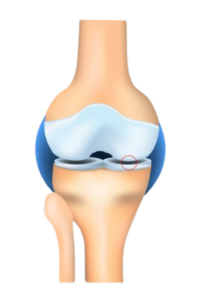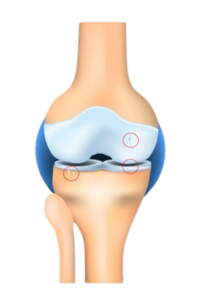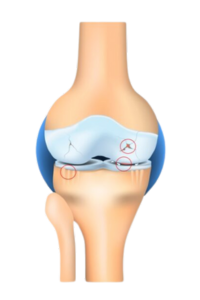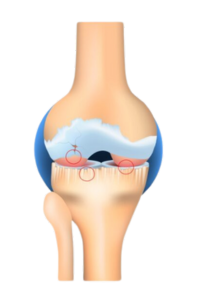Osteoarthritis (OA) (Joint ‘wear and repair') is the most common condition affecting the joints of the human body and the knee is one of the most commonly affected joints. Osteoarthritis is associated with the normal aging process. This involves by changes to the cartilage surface on the ends of the bones. In more advanced cases this can involve inflammation of the underlying bone too. Symptoms vary from person to person. At times these can include pain, swelling or reduced movement of your knee (stiffness). Depending on the degree of your symptoms some people may describe locking or giving way sensations of their knee.
Stage 1 - Doubtful
Stage 2 - Mild


Stage 3 - Moderate

Stage 4 - Severe

Often you will have noticed these symptoms gradually come on over time. Anyone can get osteoarthritis but it tends to be more commonly associated with individuals who are:
- over the age of 50
- overweight
- have a family history of osteoarthritis
- are female in gender
- who have had a severe knee injury in the past
In many cases the degree of osteoarthritis visible on an X-ray does not correlate with their symptoms. Reassuringly, many people who have signs of osteoarthritis on an X-ray have very mild symptoms or no symptoms at all.
Those people that do have symptoms may experience pain during or after certain activities like: kneeling, sitting for too long, or walking/standing for extended periods. Others may suffer ‘flare ups’ where the knee maybe painful for a number of weeks. These flare-ups usually settle as the inflammation in your knee reduces and your body stimulates its own recovery processes.

